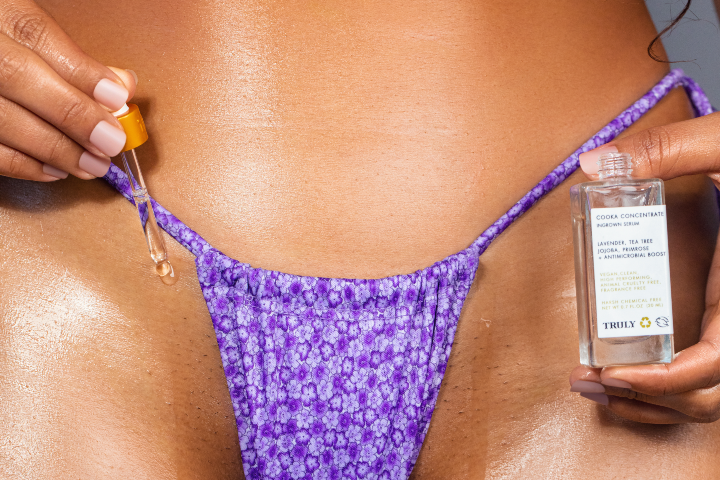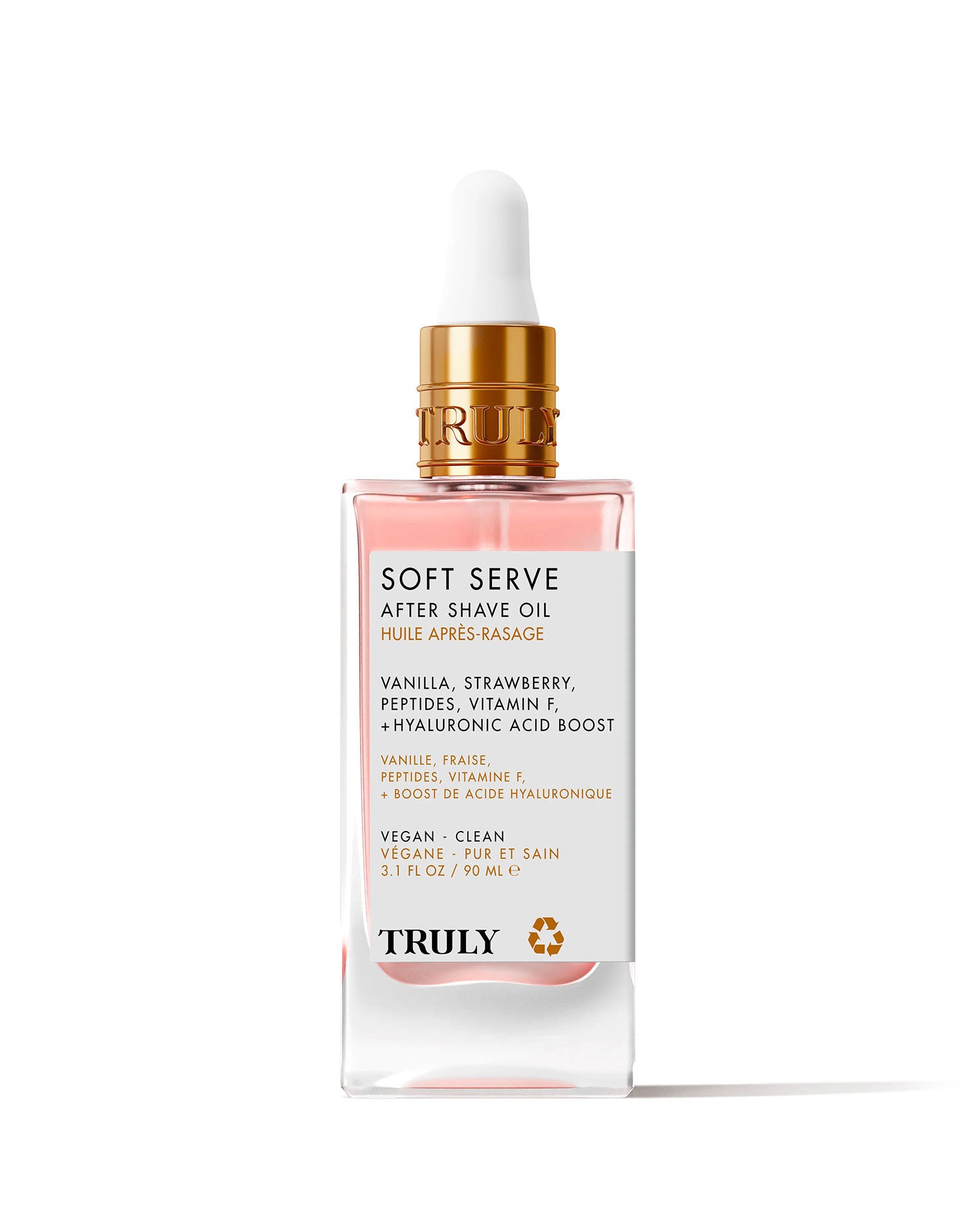Why You’re Really Breaking Out From Waxing (& How To Help)
December 30, 2022
By: Truly Beauty
Post-wax acne is a real thing. Luckily, there is a way you can stop it from happening.
Since waxing is essentially exfoliation, it can leave some skin types (especially sensitive skin) vulnerable to breakouts and irritation following a waxing session. Whether you're waxing off your facial hair, bikini line hair, or leg hair, breakouts can happen almost anywhere.
Here's how you can minimize post-wax pimples so that you can have clear, smooth skin.
Why Are You Getting Breakouts after Waxing?
Since yanking hot wax off your skin involves removing some of the skin's top layer, your pores are left exposed. This means everything from lotions to oils to bacteria can clog them up, leading to blemishes. Even if you've thoroughly washed your hands, it's still possible to add more dirt and oil to the area simply by running your fingers over your freshly waxed skin.
Waxing can cause breakouts for a number of reasons: touching the area, applying skincare products too soon after waxing, skin sensitivity, and allergies to the wax itself.
In some cases, you may actually be dealing with an ingrown hair, not a breakout. Ingrown hairs are a common side effect of hair removal methods like waxing. They occur when the hair grows and re-grows into the hair follicle, triggering painful red bumps that look like pimples. Get it checked by your dermatologist or esthetician if you suspect you have an ingrown hair, as it can become infected.
Ways to Treat and Prevent Post-Wax Breakouts
Always Start with Exfoliation
Your prep work can make or break your post-wax appearance. To prevent pimples post-treatment, use a gentle exfoliator like a scrub or washcloth to get rid of dead skin cells and remove excess oil from the skin.
Try Truly's Smooth Legend Scrub. This pink sugar scrub is infused with hydrating coconut, soothing lavender, and protective vitamin E to calm inflammation, delete dryness, and prep skin for waxing.
Keep All Areas Clean
Before and after your waxing appointment (or DIY session), it's important to keep all areas clean. If you're at home, wash your hands and nails thoroughly with soap and warm water. If you're getting a professional Brazilian or full body wax, make sure the tech wears gloves to keep things super sanitary. This is important both for your skin health and your overall health.
If something doesn't feel right at your salon or spa, get out of there! You don't want to end up with folliculitis or another infection.
Use a Tea Tree-Based Wax
Tea tree oil boasts antiseptic properties, which is why you'll often find it in acne skincare products like cleansers, toners, and serums. According to the derms, using a tea tree-based wax can help prevent pimples, too.
Applying this essential oil to the waxed area post-wax can also help treat inflammation and prevent breakouts from forming.
Apply Witch Hazel Post-Wax
If you're waxing at home, apply witch hazel to the affected area. Its antiseptic properties can ward off infection and prevent breakouts.
As always, it's important to avoid touching the area after waxing. While it's nice to feel the smooth hair-free sensation, you're most susceptible to infection following the hair removal process.
Avoid Heavy Moisturizers
Loading on layers of thick lotions after waxing will only clog the pores and make your breakout situation worse!
"It’s best to moisturize with oil-free products that are all natural and don’t contain synthetic oils," says LA esthetician Shelby Galvan. She recommends applying a skin-soothing ointment like hydrocortisone, witch hazel, or aloe vera gel to the area to try to help calm inflammation and minimize irritation.
Try Truly's Cooka Concentrate, a redness-reducing, skin-soothing formula designed to relieve and prevent ingrown formation following a bikini wax or shave. However, you can use it anywhere!
Exfoliate the Next Day
The day after your bikini or facial waxing session, lightly exfoliate the area again unless you're red or tender. Make exfoliation part of your regular routine after waxing to ward off pimples and keep your skin clear.
Abide by these Post-Wax Rules
In the few days after waxing, stay away from pedicures if you have a leg wax. If you have body waxing, stick to showering rather than bathing for the couple of days following. Saunas are also a no-no!
To keep the area blemish-free, you'll also want to avoid any type of physical activity that will make you sweat a lot, as this can lead to breakouts. In addition, wear loose clothing around the area you got waxed for 2-3 days after.
And once again, let us remind you that you should avoid touching the waxed area at least for the first couple of days to prevent dirt and oil from clogging your pores and triggering breakouts.
Most importantly: don't pop your pimples! This spreads bacteria and can encourage even more pimples to pop up. Instead, apply a little tea tree oil or witch hazel to the outside area only.
Stay Consistent
According to the experts, consistent waxes can actually help your skin respond better to the hair removal process. Most of the time, breakouts post-wax happen because the skin's not used to the process. It's too sensitive, which leaves the area irritated and vulnerable to pimples.
Aim to get a wax every four to six weeks to help the area adjust to the process and prevent breakouts from occurring. If you leave it any longer than that, you'll simply be starting the process from scratch.
If you're continuing to break out after waxing, consider other methods of hair removal. Sugaring, threading, and laser therapy are all excellent options for people who break out after waxing.
Speak to your dermatologist if you're experiencing allergic reactions to wax so that they can offer a solution. They may be able to suggest some prescription or over-the-counter options to ease your symptoms or prevent them from occurring in the first place.
Applying a thin layer of baby powder over the area about to be waxed will absorb excess oil and reduce contact irritation.




























